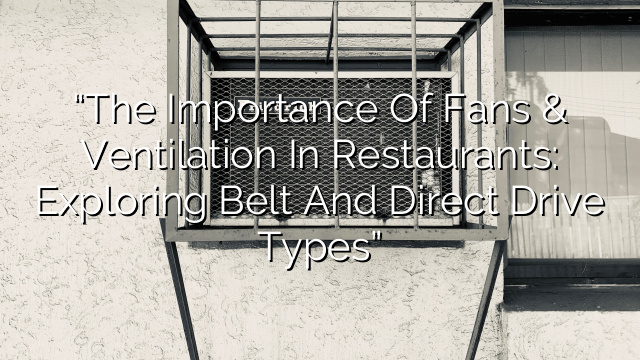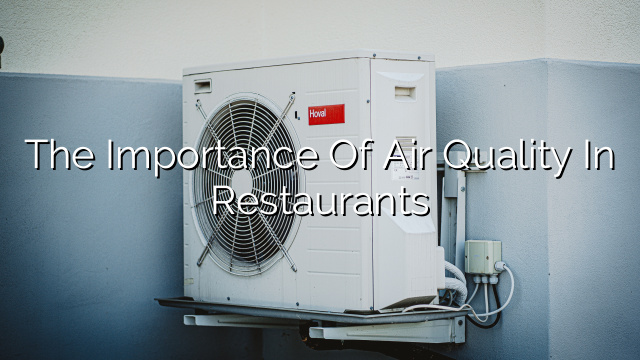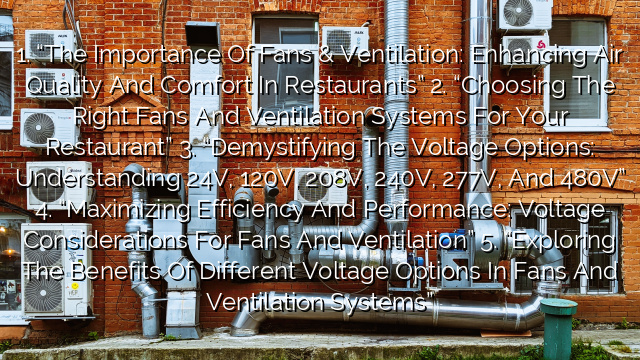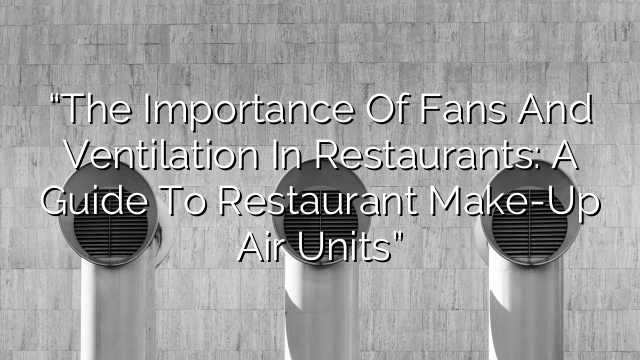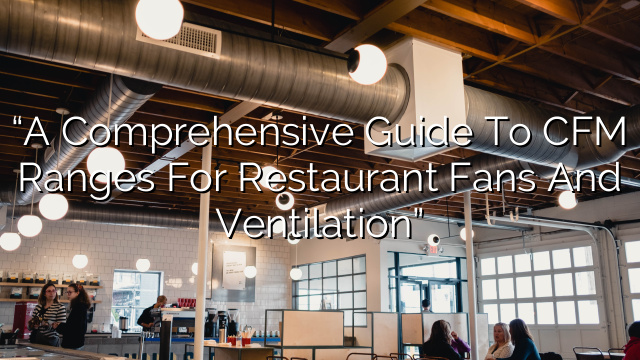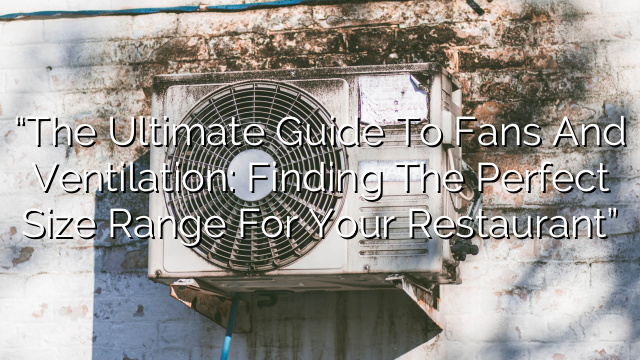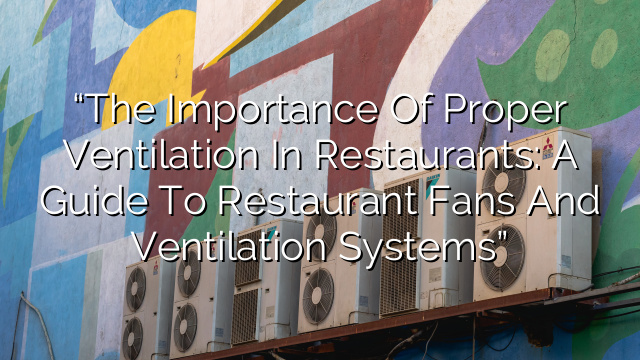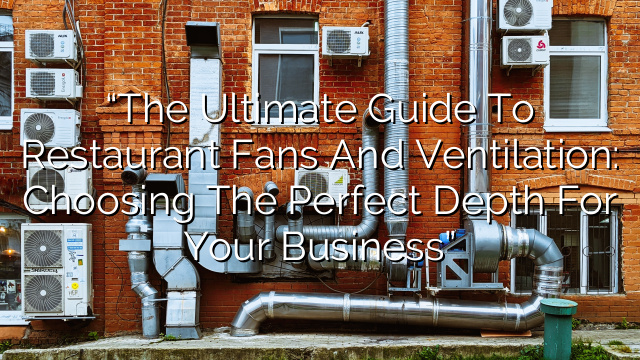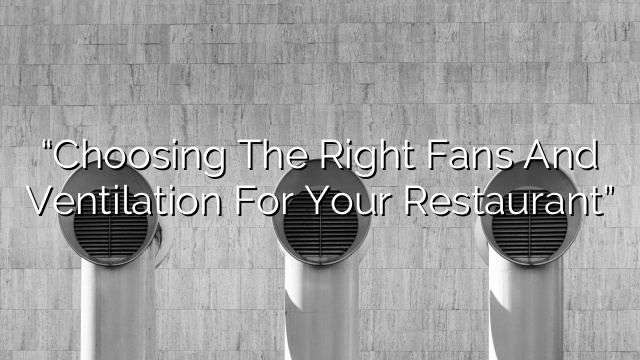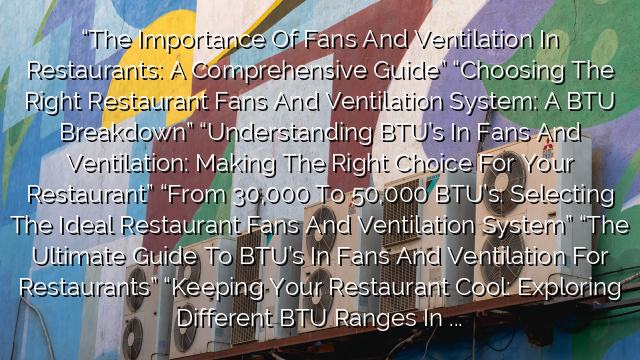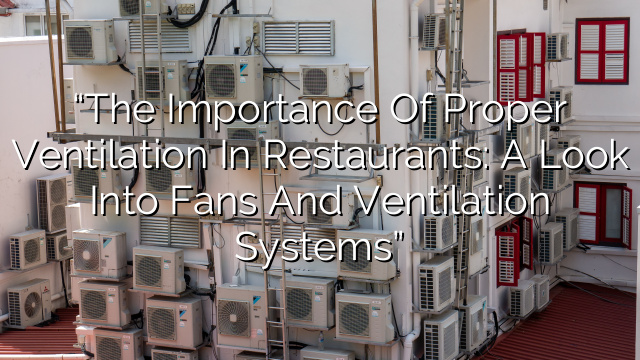Introduction
A well-ventilated restaurant is crucial for the comfort of diners and the efficiency of kitchen staff. Proper air circulation can help eliminate cooking odors, remove smoke, and control the temperature in the dining area. Fans and ventilation systems play a key role in achieving this. In this article, we will explore the importance of fans and ventilation in restaurants, focusing on two common drive types: belt and direct drive.
The Importance of Fans & Ventilation in Restaurants
1. Air Quality: Restaurants can generate a significant amount of pollutants, such as smoke, grease, and cooking odors. Without proper ventilation, these pollutants can accumulate, leading to an uncomfortable and unhealthy environment for both staff and guests. Fans and ventilation systems help remove these pollutants and maintain good air quality.
2. Temperature Control: Restaurants often have busy kitchens that can get hot and stuffy. Proper ventilation helps regulate the temperature by removing hot air and replacing it with fresh, cooler air. This creates a more comfortable environment for kitchen staff, preventing heat-related illnesses and ensuring optimal working conditions.
3. Odor Control: Strong cooking odors can quickly spread throughout a restaurant if not properly ventilated. Such odors can be unpleasant and off-putting to customers. Ventilation systems equipped with fans help to extract and filter out these odors, ensuring that the dining area remains fresh and inviting.
4. Smoke Removal: In restaurants where grilling and frying are common cooking methods, the production of smoke is inevitable. Smoke not only affects the air quality but can also pose a fire hazard. Effective ventilation systems, including fans, help to remove smoke and prevent it from spreading to other areas of the restaurant.
Belt Drive Fans
Belt drive fans are a common type of fan used in restaurants and other commercial applications. In a belt drive system, the motor is connected to the fan blades using a belt and pulley system. These fans offer several advantages:
- Noise Reduction: Belt drive fans are known for their quiet operation, making them ideal for restaurants where a calm and peaceful environment is desired. The belt absorbs vibrations, preventing them from being transmitted to the blades, resulting in a quieter operation compared to direct drive fans.
- Flexible Speed: Belt drive fans allow for adjustable fan speed. By changing the pulley diameter or belt length, the motor speed can be adjusted, enabling precise control of the airflow in the restaurant. This versatility is especially useful in spaces where varying ventilation requirements exist, such as private dining rooms or outdoor patios.
- Motor Protection: Belt drive fans have a built-in advantage when it comes to motor longevity. The belt acts as a shock absorber, reducing the stress on the motor. This prolongs the life of the motor, resulting in less frequent maintenance and replacement.
Direct Drive Fans
Direct drive fans are another popular option for restaurant ventilation systems. In a direct drive system, the fan motor is directly connected to the fan blades. Here are some benefits of using direct drive fans:
- Efficiency: Direct drive fans are highly efficient as they eliminate power losses that occur in belt drive systems. Since there are no belts or pulleys involved, direct drive fans transfer the motor’s power directly to the fan blades, resulting in improved energy efficiency.
- Low Maintenance: Direct drive fans require minimal maintenance. Without belts to inspect, adjust, or replace, maintenance tasks are simplified. This saves time and reduces maintenance costs for restaurant owners over the lifespan of the fan.
- Compact Size: Direct drive fans are typically more compact than belt drive fans. This makes them suitable for restaurants with limited ceiling or wall space. The smaller size of direct drive fans also allows for more flexibility in installation options.
Choosing the Right Drive Type
When deciding between belt drive and direct drive fans for a restaurant, several factors should be considered:
- Noise Level: If noise reduction is a priority, especially in fine dining establishments or serene spaces, belt drive fans are a better choice.
- Precision Control: If the restaurant requires precise control of ventilation in different areas, such as open-air patios or private rooms, belt drive fans offer greater adjustability.
- Energy Efficiency: For restaurants that prioritize energy efficiency and low operational costs, direct drive fans are the ideal option.
- Space Constraints: Direct drive fans are more compact, making them suitable for restaurants with limited space for ventilation equipment.
Ultimately, the choice between belt drive and direct drive fans depends on the specific needs and preferences of the restaurant, as well as budgetary considerations.
FAQs
Q: How often should restaurant ventilation systems be inspected and maintained?
A: Restaurant ventilation systems should be inspected and cleaned regularly to ensure proper functioning. The frequency of maintenance depends on various factors such as kitchen activities, volume of cooking, and type of food being prepared. It is recommended to have a professional inspection annually and clean the system quarterly or semi-annually.
Q: Can fans and ventilation systems help reduce energy costs in restaurants?
A: Yes, fans and ventilation systems designed for energy efficiency can help reduce energy costs in restaurants. Energy-efficient systems consume less power while effectively removing pollutants and regulating temperature. Additionally, regular maintenance ensures that the system operates optimally, further contributing to energy savings.
Q: Are there any local or national regulations regarding restaurant ventilation?
A: Yes, there are regulations that govern restaurant ventilation, both at the local and national level. These regulations aim to ensure the safety and comfort of staff and customers, as well as the prevention of fire hazards. Restaurant owners should familiarize themselves with these regulations and work with professionals to ensure compliance.
Q: Can I retrofit an existing restaurant ventilation system with a different drive type?
A: Retrofitting an existing restaurant ventilation system with a different drive type may be possible, but it would require careful evaluation by a professional. Factors such as space constraints, compatibility of the new system with existing infrastructure, and cost considerations must be taken into account. It is recommended to consult with a ventilation expert before proceeding with a retrofit.
Q: Can fans and ventilation systems help control the spread of airborne viruses in a restaurant?
A: While fans and ventilation systems can help improve indoor air quality, they do not guarantee the prevention or control of airborne viruses on their own. However, proper ventilation can play a role in diluting and removing airborne particles, which can reduce the risk of transmission. Other measures like air filtration and adherence to hygiene protocols are also crucial in mitigating the spread of viruses.
Conclusion
Fans and ventilation systems are essential components of a well-functioning restaurant. They help maintain good air quality, regulate temperature, control odors, and remove smoke. When choosing between belt drive and direct drive fans, factors such as noise level, control precision, energy efficiency, and space constraints should be considered. By investing in the right ventilation system, restaurant owners can create a comfortable and inviting environment for both their staff and guests.

